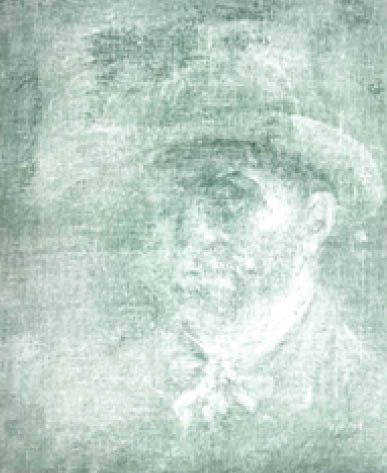‘Unknown’ Van Gogh’s self-portrait accidentally discovered
By agency reports A Vincent Van Gogh self-portrait probably never seen before was discovered at an art gallery in Scotland—accidentally—through an X-ray machine. The remarkable piece was found at the National Galleries of Scotland in Edinburgh in preparation for an exhibit at the Royal Scottish Academy. Art conservators were examining Van Gogh’s 1885 piece “Head of […]

X-ray image of Vincent Van Gogh self portrait
By agency reports
A Vincent Van Gogh self-portrait probably never seen before was discovered at an art gallery in Scotland—accidentally—through an X-ray machine.
The remarkable piece was found at the National Galleries of Scotland in Edinburgh in preparation for an exhibit at the Royal Scottish Academy. Art conservators were examining Van Gogh’s 1885 piece “Head of a Peasant Woman” and when an X-ray machine was used on it, the portrait was revealed on the back of the painting.
“Moments like this are incredibly rare. We have discovered an unknown work by Vincent Van Gogh, one of the most important and popular artists in the world. What an incredible gift for Scotland,” Frances Fowle, senior curator of French art at the gallery, said in a statement.
Upon examination, it was found the self-portrait on the back of the canvas was painted on and covered by layers of glue and cardboard. The gallery said that to save money, Van Gogh would reuse canvases by working on the reverse side.
Experts believe the portrait, dated later than “Head of a Peasant Woman,” came at a pivotal time in Van Gogh’s career when he moved to Paris and was exposed to French impressionists.
“The experience had a profound effect and was a major influence on why he adopted a more colourful and expressive style of painting – one that is so much admired today,” the Scotland gallery said.
Gallery experts say it could be possible to uncover the self-portrait, but it will require “delicate conservation work” to remove it without harming “Head of a Peasant Woman.” Conservators are working on uncovering the portrait.
